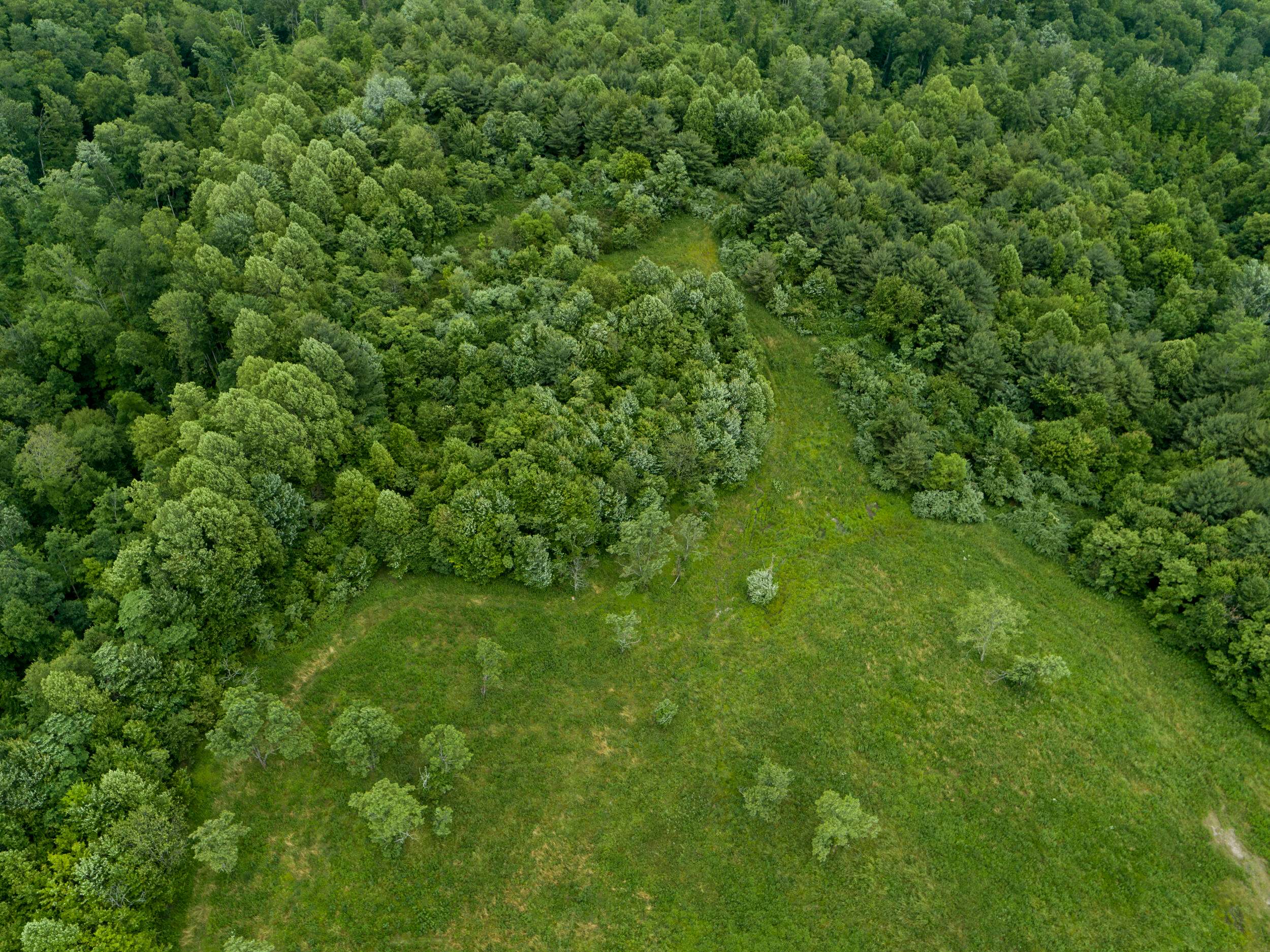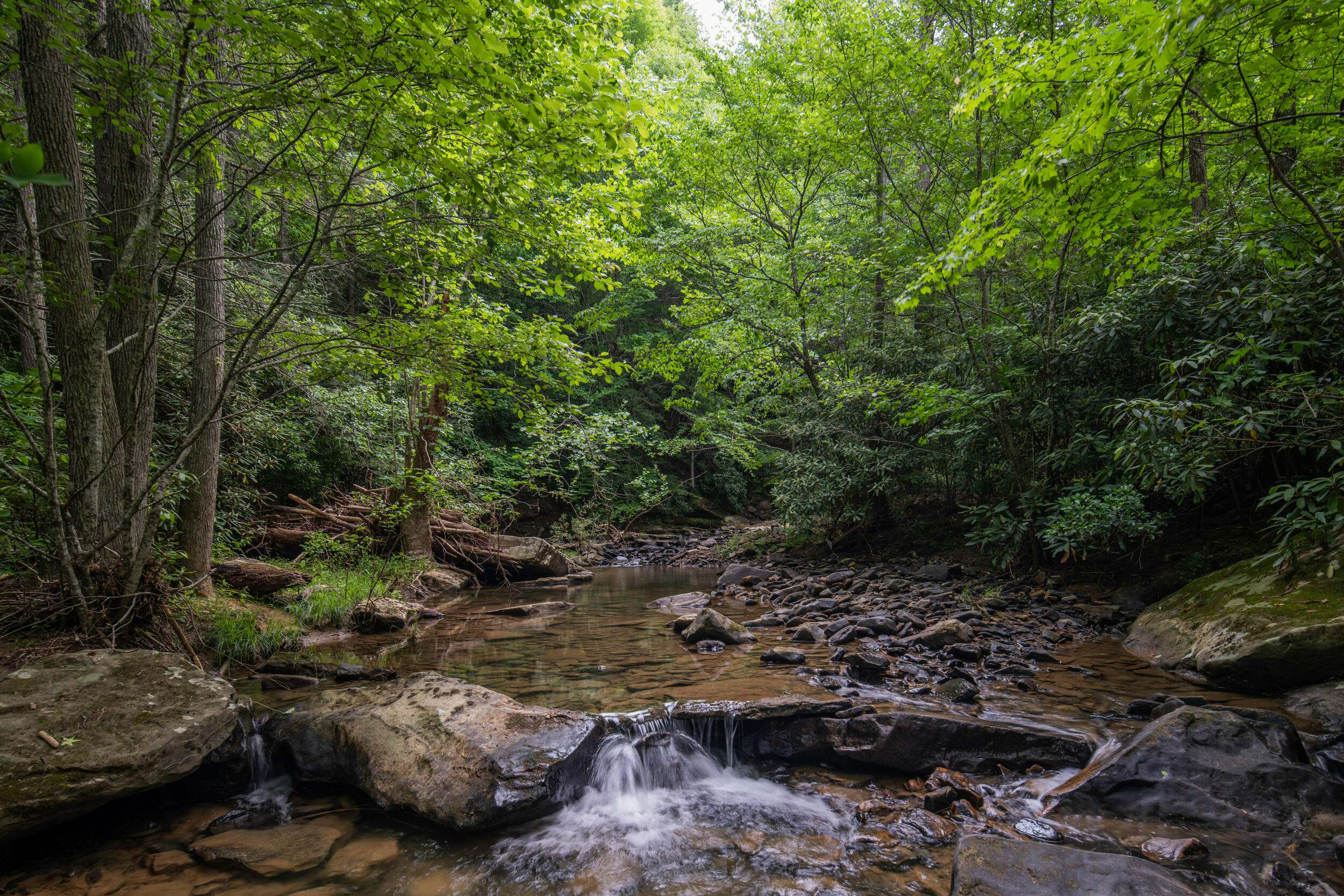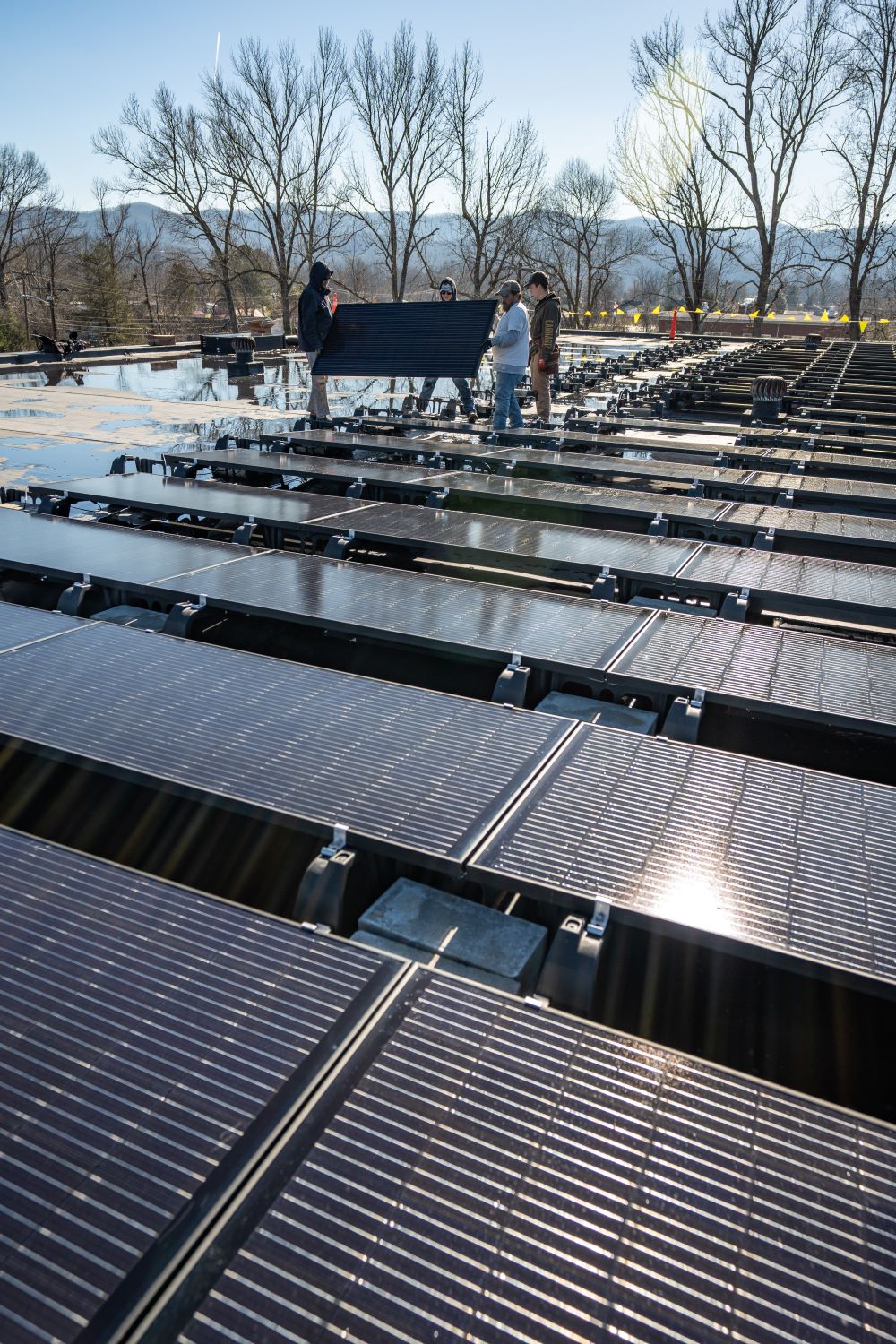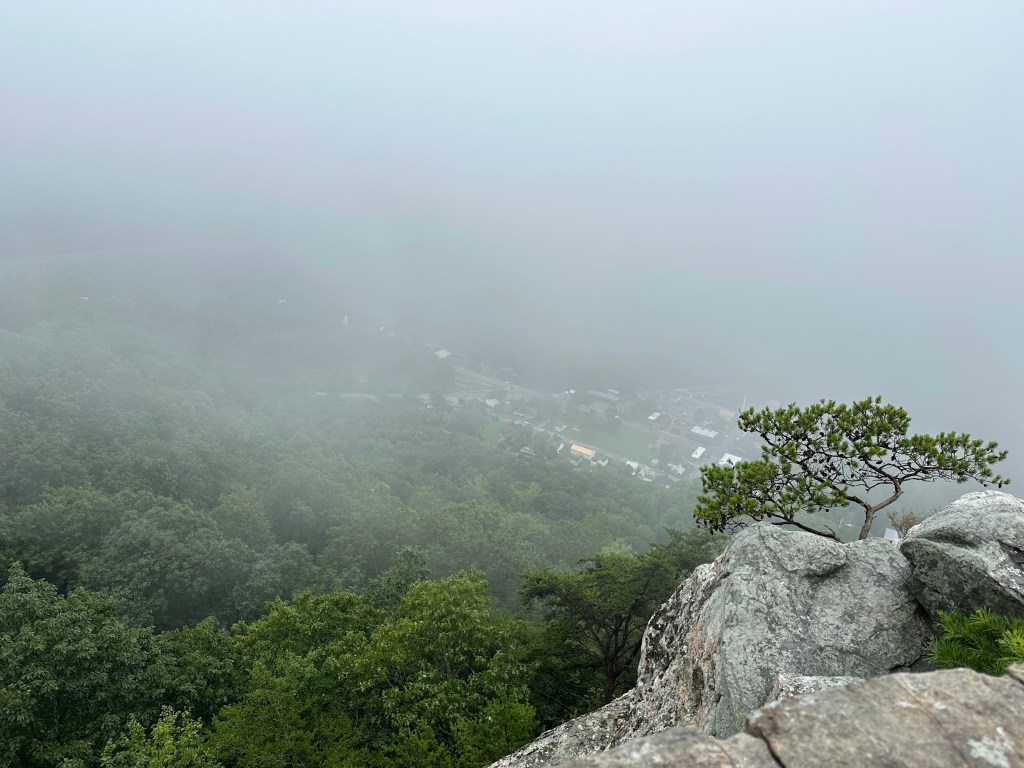Boone Bowling knows what local residents say about his hometown of Middlesboro, Kentucky. The murmurs, the complaints. All his life he’s heard it: This place stinks. There’s nothing to do here.
When he was a high-school sophomore, Boone recalls a conversation that perhaps changed the course of his life. “A classmate was talking bad about Middlesboro,” Bowling says. “And I turned to him and said, someday I’m gonna be mayor.”

He made good on his statement. At 29 years old, Bowling is the youngest mayor in Middlesboro’s history.
On an overcast, humid July day, he meets me and other Nature Conservancy colleagues in the parking lot of Middlesboro’s renovated community center. Bowling has been up most of the night with his infant daughter, but he still brims with energy and enthusiasm. He has big visions for Middlesboro, many of them starting right here, with this community center.
Future Forward
Bowling knows the prevailing pessimism in his community wasn’t always there. At one point, many community members—their names enshrined on plaques—came together to build this center. But it had then fallen into disuse and disrepair, like so much in this and surrounding communities.
“There was a time, anyone who wanted a job, could get a job in coal,” Bowling explains. “We still haven’t recovered from coal.”
Become a Member
Make a lasting impact for nature when you join The Nature Conservancy
Bowling has a childhood memory of visiting the “last real McCoy,” one of the descendants of the famous Appalachian feuding family. That man left school in third grade to work the mines, and he eventually became a multimillionaire. Was that the case for everyone? Hardly.
“That sense of opportunity was there,” Bowling says. “Now we’re stepping into a new future.”
I’ve spent the past few days visiting forest restoration sites in Kentucky and Tennessee. Coal mining and other extractive industries have left a legacy there, too. I’m here to see how conservation efforts can help the Appalachian forest: not to return it to the past, but rather to shape a more resilient, diverse future.

As I’m learning today, local communities like Middlesboro are on a parallel track. They’re creating new visions for what they want their cities and towns to be. And, as it turns out, the fates of the forest and the community here are intertwined.
A Forest Legacy
My trip to the Appalachians began by touring the expansive Cumberland Forest, one of the most ambitious Nature conservancy projects I’ve visited in my 23 years with the organization. This vast project includes two forest parcels totaling 253,000 acres in Virginia, Tennessee and Kentucky.
I’ve been bouncing around in a truck with Chris Garland, central Appalachians project director. He’s shown me some beautiful sites: scenic vistas of seemingly unbroken forest, a herd of elk grazing, vernal pools echoing with a chorus of frogs.
The Cumberland Forest isn’t pristine or untouched nature. Many of the sites visited have been mined. Still, standing on what was once mine land, watching a bull elk, it’s easy to marvel at the resilience of nature and how quickly it rebounds.
But that narrative isn’t completely true. What is not immediately apparent, but that Garland points out, is the incredible amount of research, planning, partnerships and plain old back-busting physical labor that has gone into restoring the forest.

Shaping the future of the forest isn’t easy, but the results—seen all around me—are worth it.
Now Garland wants me to see another component necessary for forest conservation to work: local communities.
“These are the people who live here,” says Garland. “For a city like Middlesboro, the Cumberland Forest is literally their backyard. We recognized from the beginning that communities need to benefit from the forest.”
Many of the tracts I’ve visited in the Cumberland Forest are recovering from decades of extraction. To an untrained eye, you might not even recognize that coal mining happened.
Can communities facing economic hard times and loss of opportunity also recover from a legacy of mining?
The Community Fund
There’s a curious fact of land in the Appalachians and it’s this: the ownership of the land is often severed from ownership of what lies beneath the surface. In other words, you can own the forest, but someone else owns the coal beneath the forest.
That’s the case with the Cumberland Forest project. The project was financed using an inventive approach by TNC’s in-house impact investing team, NatureVest, which structured and closed a sustainable forestry fund to purchase and manage the working forest. The project is structured as an impact investment fund that seeks competitive rates of return for third-party investors who have an interest in the creation of environmental and social benefits. TNC is a co-investor in the fund and manages the properties as the fund’s investment manager.
But the rights to coal, gas and minerals are still owned by corporations. However, TNC receives royalties on part of the mining and mineral development. The organization decided the best possible use for these funds was to reinvest them in the local community. “Conservation and community economic development both have to be part of the future here,” says Garland.
This resulted in the Cumberland Forest Community Fund, a local grant program aimed at supporting nature-based and community development in southwest Virginia, Tennessee and Kentucky.
Garland explains that funds are allocated to projects that achieve three outcomes: enhancing local economic development, building community capacity and improving environmental quality within the program area.
In Tennessee and Virginia, many of the funds have been allocated to outdoor recreational opportunities and improved outdoor access. There’s an elk viewing platform, kayak access, playground renovations and city tree plantings.
In Kentucky, the Community Fund has focused on grants for rooftop solar for local governments and community non-profits. TNC has partnered with Mountain Association to install solar projects that will deliver long-term cost savings for local governments and community non-profits while also reducing carbon emissions and providing an outreach opportunity within Kentucky about the benefits and feasibility of clean energy.
One of those grantees was Middlesboro. The Community Fun provided $77,900 for a rooftop solar project to be installed on the community center. This in turn was leveraged for additional funds, bringing the total for the project to over $130,000, allowing a larger solar project than originally envisioned.

“You need to meet Boone Bowling,” Garland had told me early in our trip. “He’s such an inspirational, energetic guy.”
The Magician of Middlesboro
We’re in the community center now, and Bowling is pointing around to the renovated building and his plans. There will be a winter concert series in the auditorium. Soon, basketball hoops will be installed and an adult league will be formed. Looking around the building, you can almost hear the squeak of shoes on the gymnasium, the sound of happy voices.
In part, the solar project helped launch this. “Solar panels are such a new thing here. Nobody knows much about solar in an area that’s so long been dominated by coal,” says Bowling.
But that rooftop solar has enabled Middlesboro to save $8,000 on energy costs. “That’s significant for a community our size,” says Bowling. “It’s enabled us to open this building up, to make it a center of our community.”
It’s helped the community center renovation and the reopening of the pool. As if on cue, during our discussion, lifeguards show up and the happy chatter of summertime fills the outside air.
Just as with forest restoration, though, community revitalization doesn’t just happen. The hopeful energy at the community center is the result of tremendous hard work and positive energy in a place where pessimism often rules the day.
Bowling knows what it will take to restore community. He has heard from all the people who tell him it won’t work. He sees the easy path, sitting on social media and launching negative messages.
“I’m a big believer that if you don’t work to fix something, you can’t complain,” he says.
He had moved away from Middlesboro for college, but unlike many, came back and soon served on the city council. And then he made the decision to run for mayor.
“I prayed about it long and hard,” he says.
Restoration and the Art of the Possible
Boone Bowling believed in this community and its possibilities, how one positive thing can lead to another. He tells the story of a non-profit he helped form, called the Middlesboro Magicians. They did a fundraiser that resulted in a Christmas light display designed by second graders. The kids designed a giant switch, and on the night of the display’s opening, when the kids flipped that switch, the lights went on. As if by magic.
“To see the looks on their faces, literally lighting up,” he says. “Talk about an ‘aha’ moment, when people see what is possible.”
But this isn’t pulling a rabbit out of a hat. There’s no trick. Revitalizing the community is hard work. “In my head, I see our downtown rocking and hopping,” Bowling says. “But what I really want is the community to be involved. I want people thinking about their community positively instead of negatively. You need the whole community behind this.”
A frequent theme in my discussions about Cumberland Forest conservation is around the reality of restoration. You can’t restore the forest to an untouched condition.
Like Humpty Dumpty, you can’t just put it back together again to make it exactly like it was 100 or 500 years ago. But you can restore a diverse, resilient, healthy forest. You can create habitat that can and will be used by birds and bats, elk and salamanders.
Similarly, you can’t turn the clock back on a community, to return to some nostalgic time 50 or 75 years ago. But conservationists and community leaders like Boone Bowling can work together to shape cities that are vibrant and resilient. A city where there is something to do, music festivals and pool days. Forests that offer places to hunt and ride ATVs. Where even the rooftops can offer a cleaner, greener, cheaper energy.
“Appalachia can have a stigma around it,” says Bowling. “There hasn’t been a lot of hope here, or a sense there’s a light at the end of the tunnel. People live here and don’t see the beauty around us. It’s time to change that narrative. We’re stepping into a new future. There’s a new shape to Appalachia. It’s an exciting time to live here.”




Wow … Boone Bowling sounds like a great guy. Jimmy Renfro and I had lunch with another cousin in Middlesboro one day and then went up to the gap. My grandmothers family the Mackey’s came to Kentucky through the gap with Daniel Boone.
Your stirring up a lot of memories but making me feel old at the same time 🙂